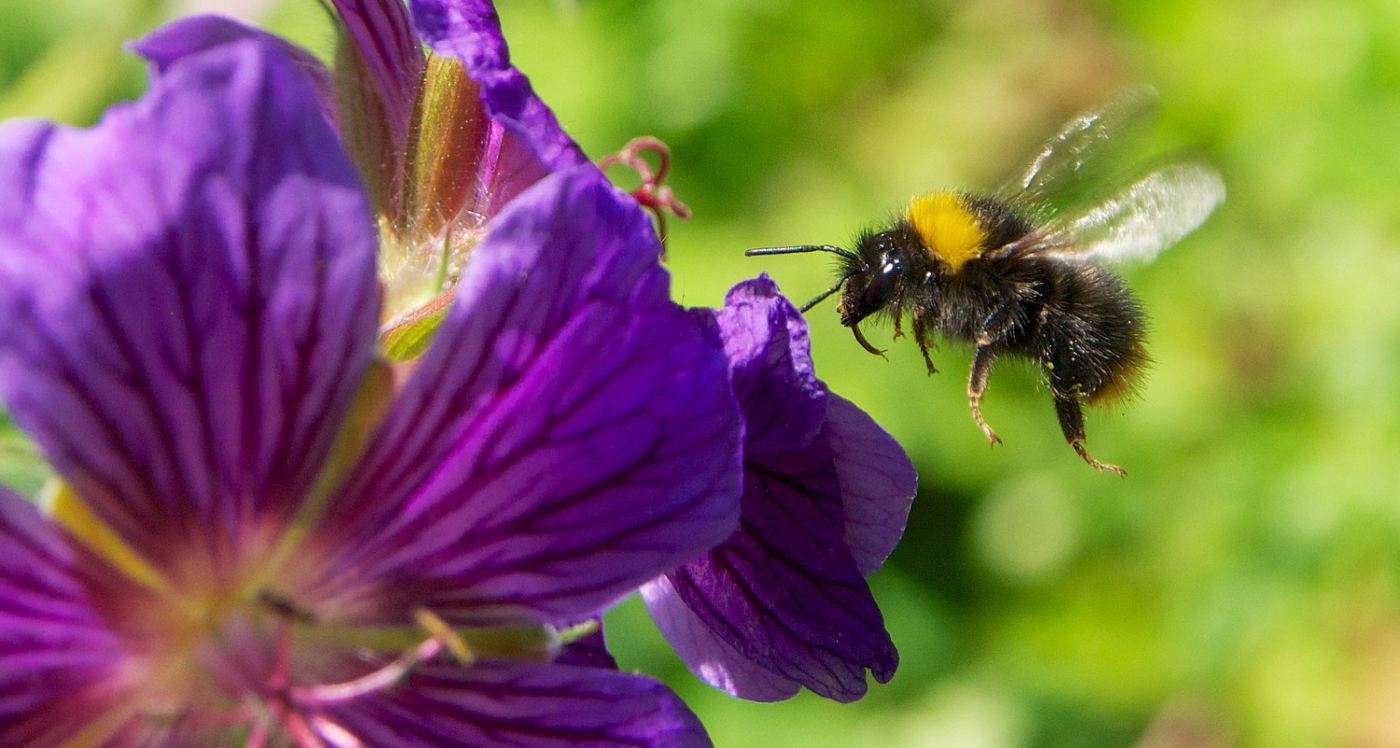Smithsonian Says These Moths Are So Gorgeous, They Put Butterflies to Shame: It's National Moth Week
Moths are just as beautiful as their day-living cousins, it's just harder to spot them. During National Moth Week, people are realizing it.

Despite their name, there's no bumbling in a bumblebee's movements. They are busy surveying your yard for the tastiest and richest supplies of nectar and pollen.
They're also biting tiny chunks out of leaves as they go along, but are neither ingesting nor bringing the leaf fragments back to the hive. Instead, like so many gardeners with their pruning sheers, the bees are manipulating flowers into blooming earlier than normal, a discovery that has scientists buzzing.
Between the time of their emergence and the month of April when flowers are plentiful, buff-tailed bumblebees in a Swiss research lab were observed over several trials to prune the leaves of preferred plants while not in flower when the bee colony had been deprived of pollen. This was in contrast to the actions, both in the lab and on the building's rooftop, of another colony that was not pollen-deprived.
Additionally, they had a profound effect on the plants they pruned. Their nibbling enticed flowers out of a tomato plant a whole month early, and black mustard plants two weeks early.
Continuing their rooftop research, the Swiss beekeeper/scientists found that over the course of early summer, wild bees of two other species began visiting and puncturing the leaves on non-flowering patches of plants.
Such a profound development in our understanding of a well researched insect is exciting, and a collection of biologists had a lot to say to National Geographic about the finding.
Some suggest it was an exceptional display of communication between not just different species, but different kingdoms, as the biting of the leaves might be the bee's way of alerting the flower to its need for food and offering its services as a pollinator in return.
The question of why biting, and what is the mechanism that translates the sensation into early flowering, are still open to debate. The Swiss researchers punctured the leaves of their plants with tiny razor blades shaped like the bee-made puncture marks, and while this caused the plant to flower earlier, it didn't happen as fast as when the bees made the marks.
This suggests there could be another piece of biological equipment the bees have that works in tandem with their mandibles, perhaps an odor or scent gland. If that mechanism could be figured out, it could be the largest development in agriculture since nitrogen fertilizer, as farmers would be able to fit a lot more into a single season, and for those maintaining orchards, control when bees visit for pollination.
Another hypothesis that has developed in the wake of the discovery is that if plant species change their flowering patterns in the effects of a changing climate, bees may still have the ability to manipulate their preferred plants into producing flowers in time to prevent starvation.
Neal Williams, a bee biologist at UC Davis, commented how wonderful it was that even in the year 2021, such a large discovery can simply come from observing an animal in its day-to-day activities.
BUZZ This Fascinating Story Over to Pals on Social Media…
Be the first to comment